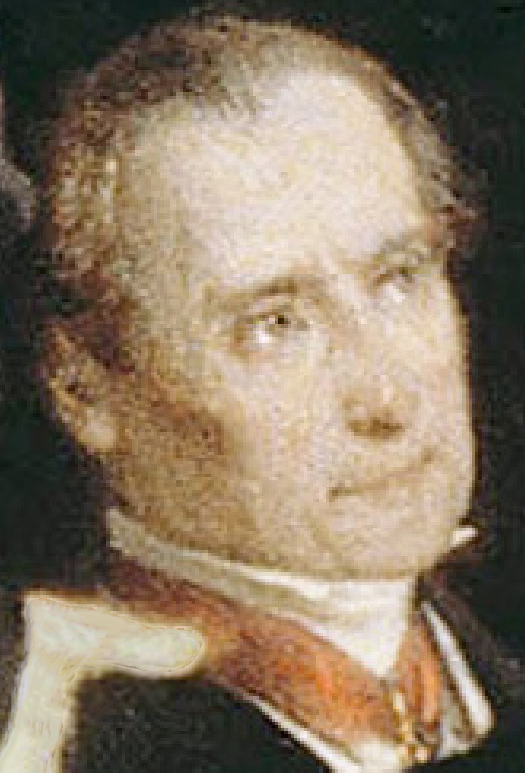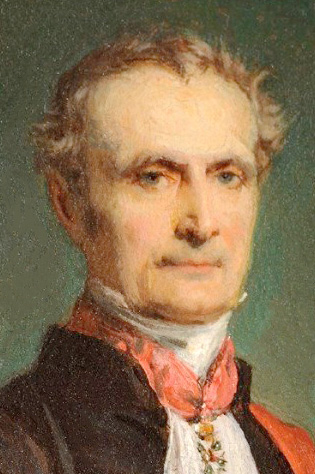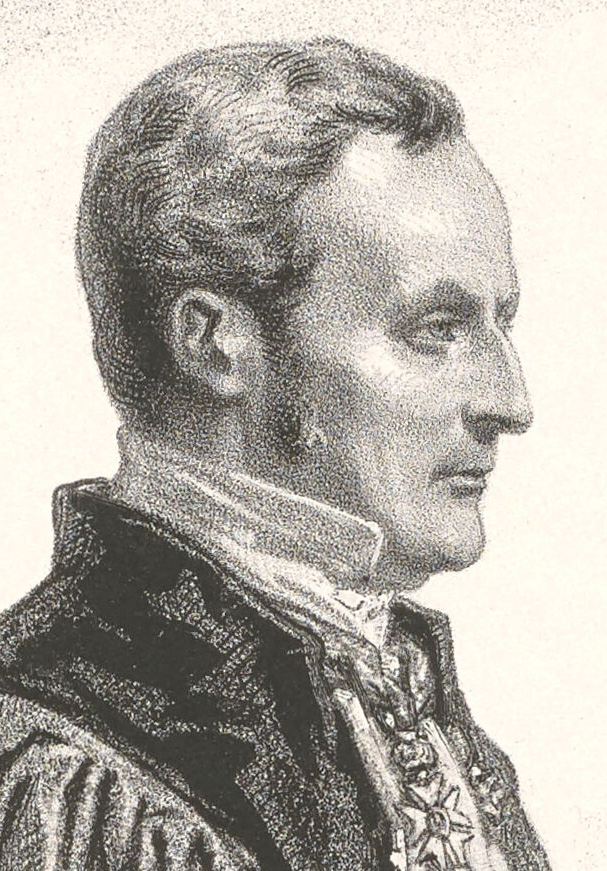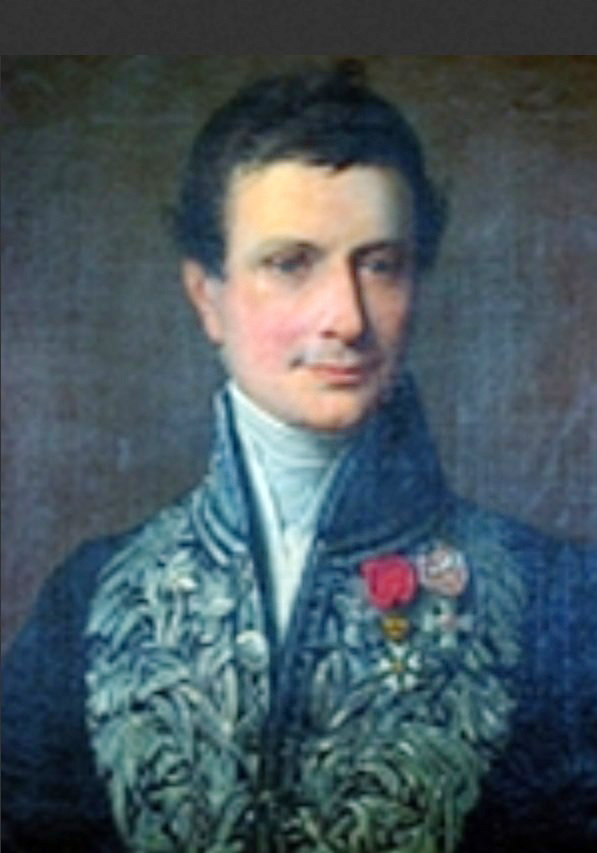Louis de Belleyme (1787 – 1862), President of the Civil Court of the Seine
1st image: Soirée; 2nd: by Jalabert (1857); 3rd: by Gavarnie (1853); 4th: unknown (c.1810). (Alternative: Giraud).
Although Louis-Marie de Belleyme bears a strong facial resemblance to this person in Une Soirée au Louvre, his name is absent from contemporary press accounts of the vendredi-soirée gatherings, and he was not caricatured by Eugène Giraud.
Nonetheless, de Belleyme’s judicial responsibilities brought him into contact with prominent literary and cultural figures, including Balzac, Hugo, and Dumas, the latter of whom referenced him in his novel Les Mohicans de Paris. Of particular note are two court decisions in which de Belleyme released the tragedienne Rachel Félix81 from financial penalties incurred for failing to appear at scheduled performances — first at the Théâtre Français in Amsterdam (1847), and later at the Comédie-Française in Paris (1849). At the start of a benefit soirée in 1849 at the Odéon theatre for Rachel’s younger sister, Sarah Felix, he intervened when a bailiff took the revenue to cover her debts. He issued a decree ordering the money to be returned immediately to the actress, and returned to his loge.
His prominence in mid-19th-century Paris is further underscored by the marble statue sculpted by James Pradier03 in 1848.
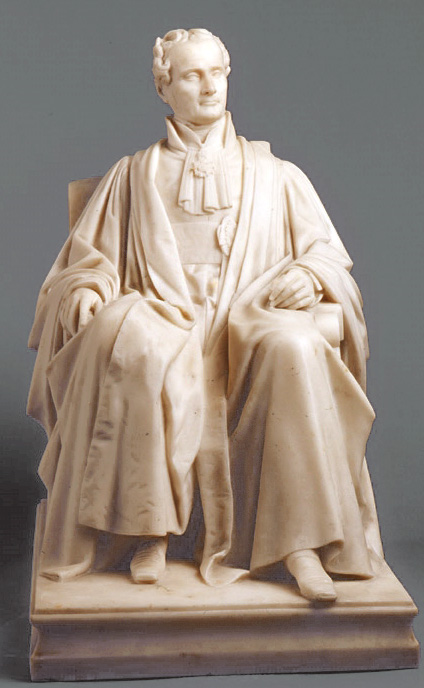
De Belleyme was known to attend other elite gatherings, including a reception at the Élysée Palace in January 1851. On Sunday, 21 December 1851, de Belleyme was among the guests at a dinner hosted by Princess Mathilde, as recorded by Viel-Castel43, alongside fellow magistrate Chaix d’Est-Ange06. Late December 1852, he attended a grand soirée hosted by his successor, Seine Prefect of Police Pietri (uncle of Tito Franceschini-Pietri04b), together with count de Nieuwerkerke16.
He also served as a patron of the Bouffes-Parisiens theatre, founded by Jacques Offenbach in early 1855. Among his fellow patrons were Auber56, Baroche61, Ingres39, de Morny48, de Rothschild, and Vernet31. The theatre’s programming included opera-bouffe —a light and often satirical operatic genre— as well as pantomimes and performances by young women noted for their charming legs. This venue may be considered a precursor to the later Folies Bergère.
Caricaturist and pioneering photographer Nadar described de Belleyme as “as tall as a curtain rod.”
The Belleyme family belonged to the ancient nobility of Périgord, with documentary evidence of the name dating back to the medieval period. Louis-Marie’s father, Pierre de Belleyme, was a distinguished engineer and cartographer who produced the first map of France divided into 88 departments for King Louis XVI in 1791.
Louis, noted for his intellectual acuity and rapid decision-making, qualified as a lawyer in 1807. His talents were recognized by King Charles X, who appointed him King’s attorney in Corbeil in 1814. He subsequently held several key positions: advisor to the Royal Court in Paris, judge of instruction (responsible for determining whether sufficient evidence existed to proceed to trial), and King’s attorney at the Seine court. He also represented Dordogne in the Chamber of Deputies, the lower house of the French legislature.
In 1828, the King appointed him Prefect of Police for the Seine, a position he held for twenty months. In this capacity, de Belleyme introduced lasting reforms to urban governance: he authorized the use of horse-drawn omnibuses, supported the installation of gas lighting, and reorganized the city’s night watch into a uniformed municipal police force —the ‘sergents de ville’— whose blue coats and black top hats would later inspire the British “bobbies.”
In August 1829, de Belleyme was appointed President of the Civil Court of the Seine, a position he held until his retirement in 1857. As court president, de Belleyme presided over several high-profile cases. He affirmed the court’s jurisdiction in the matter of the State’s confiscation of the Orléans family’s properties, a decision later upheld. When England returned the will of Napoleon I to France in 1853, de Belleyme authenticated each page. In March 1854, he acquitted Charles de Morny48 in a case brought against him by publisher Louis Véron.
De Belleyme was depicted here beside the playwright Ponsard70a, who appears to turn his back toward him. It probably was coincidental, but in early 1855, de Belleyme presided over a case in which he ruled against the repayment of a loan that Ponsard had extended to an actor connected to Rachel Félix, the tragedienne and former lover of Ponsard.
Despite remaining in excellent health and mental acuity, de Belleyme retired at the mandatory age of seventy. He spent the final five years of his life as an advisor to the Court of Cassation. Shortly before his death, he expressed his wish for a modest funeral:
“I want my funeral to be decent but simple. I wish to leave this world modestly as I entered it. No deputations from the corps to which I still have or would have had the honor of belonging. No soldiers or drummers for my Commander’s Cross. No speeches. I know that my children will not forget the poor, which is better. ”
Louis and his wife had three children. Both sons served as deputies for Dordogne. His youngest son, Adolphe, bears a notable resemblance to the person identified as conservator Villot72.
